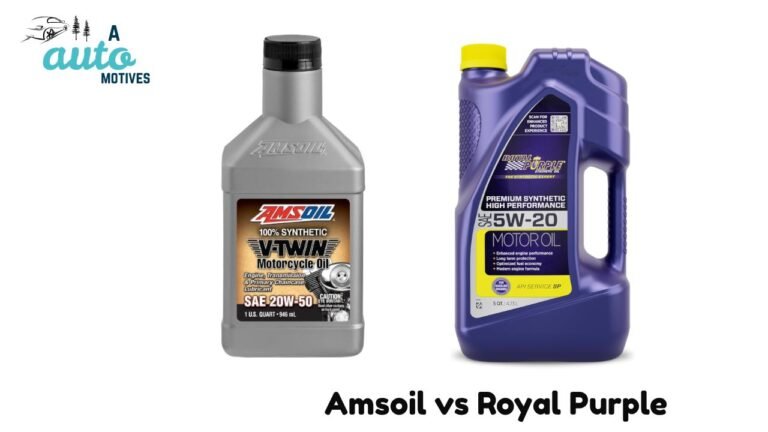RC Car Shock Oil Alternative: What You Can Use

If your RC car’s shocks are dry and your bottle of oil is empty, don’t panic just yet. Whether you’re bashing in your backyard or tuning up before a weekend race, finding an RC car shock oil alternative can be the difference between sitting out or getting back on track. In this guide, we’ll walk you through safe substitutes, unexpected household fixes, and the truth about what really works.
In This Article
- 1 Introduction: The Panic of an Empty Shock Oil Bottle
- 2 Why Shock Oil Is So Important in RC Cars
- 3 Household Items That Can Work in a Pinch
- 4 Baby Oil: The Soft Landing
- 5 Glycerin: The Gentle Performer
- 6 ATF (Automatic Transmission Fluid): Strong But Risky
- 7 Mineral Oil: The Cosmetic Companion
- 8 Vegetable Oil: When You’re Really Desperate
- 9 RC Shock Oil Substitutes: Quick Pros and Cons Summary
- 10 DIY RC Shock Oil: Can You Make Your Own?
- 11 Long-Term Fix: Just Buy the Right Shock Oil
- 12 Tuning Tips: It’s More Than Just the Oil
- 13 Common Myths About RC Shock Oil Alternatives
- 14 My Personal Go-To When I Run Out
- 15 FAQs About RC Car Shock Oil Alternatives
- 15.1 1. Can I use engine oil in RC shocks?
- 15.2 2. Is baby oil safe for long-term use?
- 15.3 3. Can I use WD-40 as shock oil?
- 15.4 4. How do I know what weight shock oil I need?
- 15.5 5. Do shock oil alternatives affect performance?
- 15.6 6. Can I mix different oils together?
- 15.7 7. What’s the cheapest real shock oil?
- 15.8 8. Will vegetable oil work in cold weather?
- 16 Final Thoughts: When To Improvise and When To Invest
Introduction: The Panic of an Empty Shock Oil Bottle
Let me tell you about the time I was gearing up for a local RC event in my town. The weather was perfect. I had charged batteries, tuned the motor, and cleaned the chassis like it was a real 1:1 race car. But when I checked my suspension… nothing. The shocks were dry. I reached for my silicone shock oil—and it was bone dry too.
Sound familiar?
You’re not alone. It happens to many RC enthusiasts. So what do you do? Skip the race? Risk using cooking oil? Google “RC car shock oil alternative” in a panic? (Yeah, I did all three.)
Good news is, there are alternatives—and some of them are better than you’d expect. Let’s dive into them.
Why Shock Oil Is So Important in RC Cars

Here’s why:
-
It controls how your suspension compresses and rebounds.
-
It affects your car’s grip, handling, and stability.
-
It prevents damage by absorbing impact forces.
-
It influences the ride height and traction under different conditions.
The oil used in RC shocks is usually silicone-based and measured in CST or weight (WT). This determines how thick or thin the oil is. Thicker oils slow down the shock’s movement. Thinner oils make it more responsive.
Now, if you don’t have silicone oil available, not just any fluid will do. But there are some acceptable, even surprisingly good options.
Household Items That Can Work in a Pinch
When you’re out of proper RC shock oil and shops are closed, your kitchen or garage might hold a quick fix. But be warned: these are not perfect replacements. They’re temporary.
Here are some common RC car shock oil alternatives you might already have:
| Alternative | Viscosity (approx.) | Pros | Cons |
|---|---|---|---|
| Baby oil | ~20WT | Smooth and light, easily available | Breaks down quickly, not temperature stable |
| Glycerin | ~35WT | Non-toxic, stable | May thicken or gum up over time |
| ATF (Automatic Transmission Fluid) | ~50WT | High temp resistance, lubricates well | Can swell rubber seals |
| Mineral oil | ~30WT | Widely used in cosmetics and food | Can degrade plastic parts |
| Vegetable oil | ~10-25WT | Readily available | Gums up fast, attracts dirt |
| Fork oil (motorcycle) | Varies | High-performance option, designed for suspension | Expensive, not silicone-based |
Let’s look into each option in more depth, so you can choose wisely.
Baby Oil: The Soft Landing
Baby oil might not sound like it belongs in a high-performance RC vehicle, but it actually works decently for light-duty bashing or casual driving. It has a light viscosity, similar to around 20WT shock oil, making it best for smaller, lighter RC cars.
What I liked about using baby oil is how it gave my shocks a smooth and plush rebound—perfect for cruising over small bumps. But after 2-3 runs, it started leaking and losing its dampening effect. Baby oil isn’t built for heat or pressure, so this is a very short-term solution.
⚠️ Avoid using it in race or high-speed off-road settings.
Glycerin: The Gentle Performer
Glycerin is a bit of a secret weapon. Found in skincare products or sold at pharmacies, it’s thicker than baby oil and more stable. I used it once in my 1/10 scale buggy, and to my surprise, it held up for over a week of regular use.
It has a consistency close to 30WT to 35WT, which is perfect for many setups. Glycerin is also non-toxic, doesn’t stink like some fluids, and doesn’t break down as quickly. But over time, it does start to thicken and lose its fluidity.
Still, if you want a middle-ground solution, glycerin is one of the better RC car shock oil alternatives.
ATF (Automatic Transmission Fluid): Strong But Risky
This one’s a favorite among DIYers—and for good reason. ATF fluid is designed for pressure and heat. It offers excellent lubrication and is close to 50WT shock oil in viscosity. If you’ve got a bigger RC car or are running it hard on dirt tracks, ATF can deliver a solid performance.
But—and this is a big one—ATF is petroleum-based. That means it can swell rubber seals, degrade certain plastics, and even discolor your shock bodies over time.
So while it may feel like a great hack, I’d recommend it only as a last resort or for cars that you don’t mind modifying or repairing later.
Mineral Oil: The Cosmetic Companion
Mineral oil is everywhere—used in skincare, baby products, even as a laxative. But is it good for RC shocks?
Surprisingly, it’s not bad. Its viscosity is somewhere around 25WT to 30WT, making it a reasonable stand-in. I used it in my vintage Tamiya and was happy with the smooth damping—at least until dust started clinging to the shocks.
The downside is that mineral oil can attract dirt easily and may degrade seals or plastic parts over time. It’s better suited for indoor RC use where there’s less exposure to debris.
Vegetable Oil: When You’re Really Desperate
If you’re reaching for the cooking oil, then things must be really desperate. I’ve tried vegetable oil (and even canola once!) just to see if it could work.
It does something. The suspension moves. But after 15 minutes of driving, the shocks become mushy, and the oil starts to smell and degrade. It’s also very sticky and attracts dust like crazy.
Bottom line: use vegetable oil only if you’re experimenting or just trying to get through a single run.
RC Shock Oil Substitutes: Quick Pros and Cons Summary
Let’s break it down in a clear, fast way. Here’s a bullet-point overview of what we’ve learned so far.
✅ Good Short-Term Alternatives
-
Glycerin – Clean, stable, decent damping.
-
ATF – Powerful, but may damage seals.
-
Mineral oil – Smooth, but sticky and messy.
⚠️ Okay for Light Use
-
Baby oil – Too light for serious use.
-
Vegetable oil – Very short-term, attracts dirt.
❌ Avoid These
-
Motor oil (too thick and heavy)
-
Water (will rust metal parts)
-
WD-40 (not an oil, displaces lubricants)
-
Brake fluid (corrosive and toxic)
DIY RC Shock Oil: Can You Make Your Own?
If you’re the kind of person who loves mixing things up (literally), you might be tempted to create your own RC car shock oil alternative. The truth is, some hobbyists actually do it—and with decent success.
Here’s one method that I tried myself and got surprisingly stable results:
DIY Silicone-Based Shock Oil Recipe:
-
80% pure glycerin (base fluid)
-
10% silicone spray (adds lubrication and temp resistance)
-
10% castor oil or baby oil (thins out the fluid)
Mix it well in a clean container and test the consistency. This blend mimics 30WT to 35WT silicone oil, depending on your ratios. Just make sure everything is clean to avoid contaminating your shock internals.
Important Tip: If you’re using this mix, flush your shocks properly before switching back to real silicone oil. Cross-contamination can mess with suspension feel.
Long-Term Fix: Just Buy the Right Shock Oil
Let’s be real. While alternatives are cool and fun to try, nothing beats the real thing. Shock oils from brands like Team Associated, Traxxas, Tamiya, or Losi are made for the exact job you need.
They’re:
-
Temperature stable
-
Compatible with seals
-
Easy to fine-tune
-
Tested and proven
And you don’t need a huge set. Just a few bottles—say, 20WT, 30WT, and 40WT—can cover most setups.
If you’re a racer or serious hobbyist, consider keeping a shock oil tuning kit with various weights. That way, you can dial in your suspension to match weather, track surface, or even driving style.
Tuning Tips: It’s More Than Just the Oil
Even with the best fluid in the world, your RC car won’t perform right if everything else is off. Suspension tuning is part science, part art.
Here are some friendly tips I learned the hard way:
Shock Tuning Checklist:
-
Change only one thing at a time. Don’t swap oil and springs together—it’s hard to know what helped.
-
Match oil weight to the season. In winter, use lighter oil. In summer, go thicker.
-
Use the same oil front and rear… unless you want different handling.
-
Bleed the shocks properly. Air bubbles = inconsistent performance.
-
Check your seals. Even perfect oil will leak if your o-rings are damaged.
If your car feels too bouncy, go thicker. If it’s too stiff and unresponsive, go thinner.
Common Myths About RC Shock Oil Alternatives
There’s a lot of confusion online about what works and what doesn’t. Let’s bust a few shock oil myths right now.
Myth #1: “Any oil is better than no oil.”
Not always. Some oils can gum up, damage seals, or attract dust. That’s worse than a dry shock for short runs.
Myth #2: “WD-40 works as shock oil.”
Nope. WD-40 is a water displacer, not a lubricant. It can dry out and destroy your seals.
Myth #3: “Thicker oil = better performance.”
Not true. It depends on your driving style. Too thick and your suspension can’t respond fast enough on rough terrain.
Myth #4: “You need matching oil front and back.”
Not necessarily. Some racers run thicker oil in front for more steering, or in the rear for better traction. It’s about balance.
My Personal Go-To When I Run Out
Look, I’ve tried almost every RC car shock oil alternative out there—from baby oil to ATF to homemade blends. If I had to choose one temporary substitute, it’d be glycerin. It’s clean, doesn’t mess with seals, and feels consistent.
But once I’m near a hobby store or Amazon delivery, I go straight for Team Associated 30WT. It’s my base oil for 1/10 scale buggies. I tune around it with lighter or thicker variants depending on the weather and track.
FAQs About RC Car Shock Oil Alternatives
1. Can I use engine oil in RC shocks?
No. Engine oil is too thick and not made for suspension damping. It also gets affected by heat and will damage seals over time.
2. Is baby oil safe for long-term use?
Not really. It works short-term but breaks down quickly and can lead to leaks and inconsistent damping.
3. Can I use WD-40 as shock oil?
Definitely not. WD-40 is a solvent, not a lubricant. It can dry out rubber and damage internal parts.
4. How do I know what weight shock oil I need?
Start with what your manual recommends. Most 1/10 buggies run 30WT to 40WT. Thicker oils = slower damping. Thinner = faster response.
5. Do shock oil alternatives affect performance?
Yes, especially over time. Most alternatives lose viscosity, attract dirt, or damage components. They’re good for emergencies, not long-term.
6. Can I mix different oils together?
If they’re both silicone-based, yes. But don’t mix silicone with petroleum-based or DIY fluids—that can create sludgy messes.
7. What’s the cheapest real shock oil?
Brands like Traxxas, TLR, and Losi offer affordable shock oils. Buying a small tuning kit is cheaper in the long run than replacing damaged shocks.
8. Will vegetable oil work in cold weather?
Nope. It thickens in the cold, and your shocks will feel like they’re frozen. Stick to silicone-based fluids in winter.
Final Thoughts: When To Improvise and When To Invest
At the end of the day, RC is a hobby full of surprises—and not always the fun kind. Running out of shock oil before a big race or bash session is frustrating. But with the right knowledge, you can improvise safely and keep your wheels spinning.
If you’re experimenting, go with glycerin or a clean DIY mix. But remember, no substitute beats real silicone oil for performance, safety, and long-term value.
Keep a few bottles in your toolbox, label them clearly, and make shock maintenance part of your regular RC care. Your suspension—and your lap times—will thank you.






